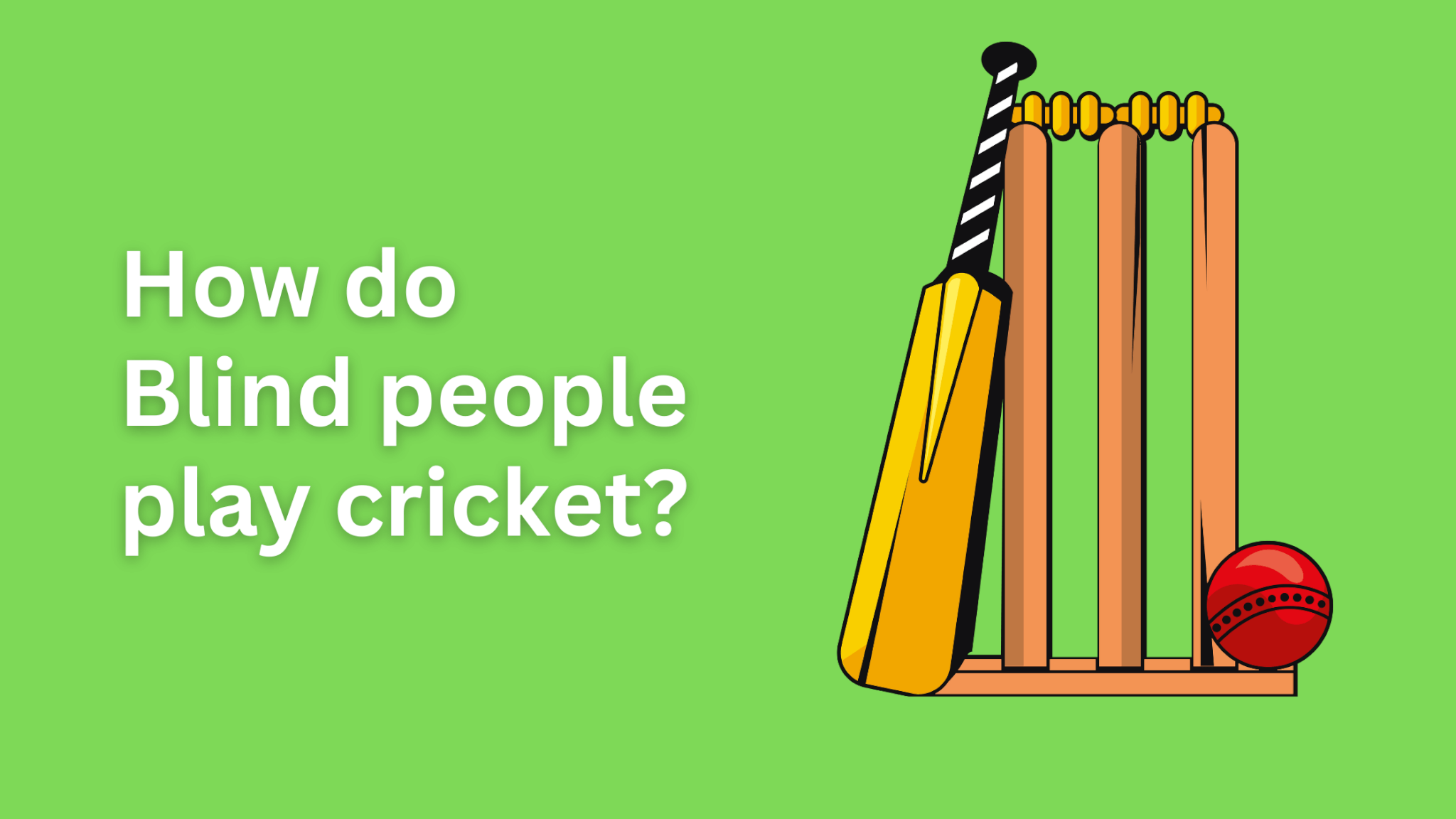Cricket is one of the most popular sports in the world, enjoyed by billions of people. It is a game that unites people across borders, abilities, and communities. Blind cricket, a modified version of the sport, allows individuals who are blind or visually impaired to enjoy and participate in cricket while adhering to standard rules. Governed by the World Blind Cricket Council (WBCC), blind cricket has grown significantly over the years and provides a platform for athletes to showcase their skills and passion for the sport.
Origins of Blind Cricket
Blind cricket started in 1922 in Australia when two blind workers used a tin can filled with rocks to play. This marked the beginning of a remarkable journey, showing that simple innovations can lead to impactful sports. Over time, this grassroots initiative evolved into a structured sport with formalized rules and specialized equipment. The establishment of the World Blind Cricket Council (WBCC) in 1996 further propelled its growth, enabling international tournaments and increased global recognition. – Key initiatives by WBCC include:
- Organizing the Blind Cricket World Cups.
- Establishing regional tournaments like the Asia Cup.
- Promoting domestic leagues to enhance player participation and skill development. Today, the game is played internationally, captivating audiences through regional tournaments like the Asia Cup. It also inspires players in domestic leagues across India, Pakistan, England, and South Africa. Source: World Blind Cricket Council
Modifications and Rules for Blind Cricket
Blind cricket is like regular cricket but has changes to make it easier for blind players. These modifications were developed through consultations with visually impaired players and extensive testing, ensuring the game remains competitive and inclusive.
1.1 Blind Cricket Players
Each team consists of 11 players categorized based on their level of visual impairment:
- B1 (Totally Blind):
- Players have no vision. Special rules apply:
- They are allowed to have a runner.
- Catches taken on the bounce are considered valid.
- Runs scored by B1 players are doubled.
- They cannot be out due to stumping.
- Players have no vision. Special rules apply:
- B2 (Partially Blind): Players with very limited vision.
- B3 (Partially Sighted): Players with better vision but still classified as visually impaired.
Each team must include a minimum of 4 B1 players, 3 B2 players, and a maximum of 4 B3 players.
1.2 Playing Equipment
Adaptations in equipment ensure the game is accessible to all:
- Blind Cricket Ball: The ball is larger than a standard cricket ball, made of plastic, and filled with metal ball bearings. The bearings produce sound, allowing players, especially those classified as B1, to identify the ball’s movement.
- Stumps: Stumps are larger and painted with fluorescent colors like orange and yellow to enhance visibility.
- Bats: Standard cricket bats are used.
1.3 Verbal Signals
Communication is critical in blind cricket:
- The bowler must shout “Ready” before bowling.
- The batsman responds with “Yes.”
- During delivery, the bowler shouts “Play.”
- The ball must be delivered underarm and touch the pitch twice before reaching the batsman.
- Non-adherence to verbal signals results in a no-ball.
1.4 Dress Code for Blind Cricket
To help identify player categories on the field:
- B1 players: Wear a white wristband or one white stripe on the right upper arm.
- B2 players: Wear a red wristband or two white stripes.
- B3 players: Wear a blue wristband or three white stripes.
1.5 Playing Area
The blind cricket playing field is similar to standard cricket:
- The boundary measures between 45 to 50 yards from the center circle.
Blind Cricket World Cups
ODI Blind Cricket World Cups
Learn more about ODI Blind Cricket
- 1998: Held in New Delhi, India. Winner: South Africa (defeated Pakistan). This inaugural event showcased the potential of blind cricket on a global stage, with South Africa delivering an outstanding performance.
- 2002: Held in Chennai, India. Winner: Pakistan (defeated South Africa). Pakistan’s victory solidified their dominance in the early years of blind cricket.
- 2006: Held in Islamabad, Pakistan. Winner: Pakistan (defeated India). This World Cup highlighted the intense rivalry between India and Pakistan in blind cricket.
- 2014: Held in Cape Town, South Africa. Winner: India (defeated Pakistan). India’s victory marked a new era of excellence in blind cricket.
- 2018: Held in Sharjah, UAE. Winner: India (defeated Pakistan). This tournament was a testament to India’s consistent performance and skill in blind cricket.
T20 Blind Cricket World Cups
- 2012: Held in Bangalore, India. Winner: India (defeated Pakistan). This tournament was a landmark event, showcasing India’s dominance in the shorter format and highlighting emerging talents in blind cricket.
- 2017: Held in Bengaluru, India. Winner: India (defeated Pakistan).
- 2024: Held in Multan, Pakistan. Winner: Pakistan (defeated Bangladesh).
Prominent Blind Cricketers and Teams
Blind cricket has produced several inspirational players who have overcome significant challenges to excel in the sport. For example, Shekhar Naik, a former captain of the Indian blind cricket team, overcame economic hardships and lack of resources to lead India to two T20 World Cup victories. His story is one of resilience and determination, inspiring others to achieve their dreams despite obstacles.
- Masood Jan (Pakistan): Holds the record for the highest individual score in a limited-overs blind cricket match, scoring 262 not out against South Africa during the 1998 Blind Cricket World Cup.
- Ajay Reddy (India): Current Indian blind cricket captain who led India to multiple victories.
Teams like India, Pakistan, and South Africa have consistently dominated international blind cricket. Their dominance stems from rigorous training programs, strategic gameplay, and strong support systems that enable players to excel. For instance, India has focused on nurturing talent through grassroots initiatives, while Pakistan’s success is often attributed to their aggressive playing style and teamwork. South Africa, on the other hand, is known for their robust training infrastructure and emphasis on fitness.
Frequently Asked Questions (FAQs)
Have you ever wondered how blind cricket works and why it matters? Below are answers to some of the most commonly asked questions to help you better understand the sport.
1. What is blind cricket and how does it work?
Blind cricket is a modified version of traditional cricket designed for players who are blind or visually impaired. The game uses specific rules, such as underarm bowling, verbal signals, and sound-emitting balls, to make the sport accessible to all players.
2. What equipment is used in blind cricket?
The equipment includes a larger ball filled with ball bearings to produce sound, allowing players to hear its movement. The stumps are taller and often painted in bright colors to aid visibility for partially sighted players. Standard cricket bats are used.
3. How are players categorized in blind cricket?
Players are classified into three categories based on their level of visual impairment:
- B1 (Totally Blind): No light perception in either eye.
- B2 (Partially Blind): Ability to recognize the shape of a hand up to a visual acuity of 2/60.
- B3 (Partially Sighted): Visual acuity above 2/60 up to 6/60.
4. What are the major tournaments in blind cricket?
Major tournaments include the Blind Cricket World Cup and the T20 Blind Cricket World Cup, with participating countries such as India, Pakistan, and Australia. These tournaments showcase the talents of visually impaired cricketers on an international platform.
Conclusion
Blind cricket proves that no barrier is insurmountable in the pursuit of sports and dreams. By showcasing resilience and teamwork, it empowers visually impaired athletes and inspires people around the world to embrace inclusion and determination. Want to learn more or support blind cricket? Explore resources like the World Blind Cricket Council and join efforts to promote inclusive sports by attending matches or volunteering.

